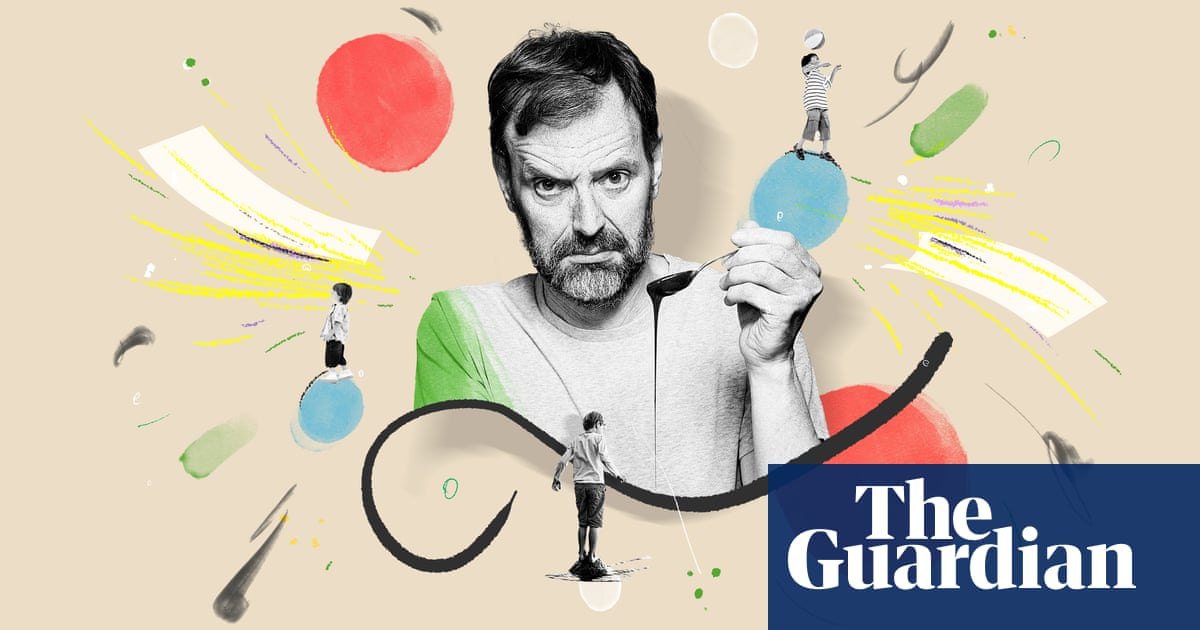
Iam at a 60th birthday celebration in the country, on a walk that will turn out to be 8½ miles long. The 30-odd invitees are snaking in single file beside a hedge, a glimpse of the sea visible in a dip between rolling hills. The day is bright and warm.
There is a guide of sorts, a man I don’t know. He has a stick, a tweed jacket full of moth holes and the air of someone familiar with local matters. He stops to point things out, but I am always near the back, and by the time I get there the lecture is usually over.
In a bid to catch up, I overtake my friend Stefi, who is wearing his dog in a sling, like a baby.
“She’s just had an operation,” he says.
“I’m not judging,” I say.
The group bunches up while everyone waits to cross a stile, and spreads out again as the route heads down a steep hill.
“They say you burn more calories walking downhill than uphill,” I say to Stefi. He looks at me.
“How could that possibly be true?” says Stefi.
“It is true,” I say. “I heard it on a show.”
“OK,” says Stefi, “explain to me how it works.” This is difficult: I listened closely enough to the programme to believe the assertion, but not closely enough to be able to defend it.
“You know, muscles,” I say.
“It must be bullshit,” he says.
When the way turns uphill again, I leave Stefi behind. I feel bad because he’s handicapped by the dog strapped to his chest, but I need to find someone more credulous to chat with.
At the top of the hill, near the intersection of two hedgerows, our guide is talking about the castle. I miss the beginning, only hearing some stuff about its ancient provenance, historical significance and strategic importance. People begin to mutter to one another. Eventually someone at the back raises a tentative hand.
“Where is it?” she asks.
“Where’s what?” says our guide.
“The castle,” she says.
“It’s here,” he says, using his stick to point to the hedge, and the grass, and the other hedge.
Everyone looks round, thinking the same thing: there’s just nothing.
“It’s not like a castle on television,” says the guide. “With walls and drawbridges and turrets.”
“Is it a castle of the mind?” says our host, the man whose birthday it is.
“You have to understand,” the guide says. “They built this thing without machines, without spades.”
“Just with their imaginations,” I say, under my breath. The group moves on, bewildered.
After lunch, I catch up with my wife on a descending slope. She is talking to our friend Miranda, and they are walking very quickly.
“They say you burn more calories going downhill,” says Miranda.
“Yes, I’ve heard that,” my wife says.
“It sounds like bullshit,” I say.
“No, it was on Radio 4,” my wife says.
“I listened to the same thing!” Miranda says.
“Me too,” I say, “but, I mean, how would that even …?” My words are lost on the breeze as they pull ahead of me.
Reconvening for dinner later, the 30-odd friends stand with champagne glasses in their hands as our host – the man whose 60th birthday it is – makes a brief speech. The first part is largely given over to thanking people, and the last bit to introducing the next speaker: me. I have a few sheets of A4 clutched in my left hand, covered in crossings out. Most of my recent revisions have taken the form of second thoughts.
The man whose birthday it is suddenly declares that in all the years I have been writing my column, he has never been named in it. He rattles off a long list of those present who have been named, some of them many times. Whereas he, he says, has only appeared twice, once as an unnamed, hard-of-hearing extra with no funny lines, and once as a minor character known only as Friend C.
I’m a little stunned by this. I often worry about how people will feel about being named in print, but I never give much thought to how they might feel about being left out.
When the speeches are done and glasses have been raised to honour the man who’s 60th birthday it is, I go and find him to assure him it’s nothing personal.
“It’s just because you’re called Piers,” I say. “I can’t be having people knowing I know someone called Piers.”












